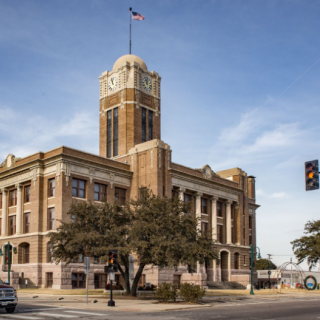The heated 2020 Presidential Election incites the question for Ohioans: what has Trump done for the people of Ohio?
We have indeed set records these past four years – from jobs to factories and agriculture – and why are we tired of these records being broken? Because they’re all going in the wrong direction.
Economic inequality, unequal development, and leveling of labor has plagued the rust belt the past 40-plus years. This is the understandable context for rural Ohio, some of suburbia and some blue-collar pockets of Ohio’s turn to populism when it was presented with a right-wing, anti-establishment populist candidate promising an alternative to the “status quo.”
Trump has proved, however, to be a hollow right-wing populist in the lack of real economic development outside of the tax cuts and deregulation (a very mainstream conservative political strategy) that mostly benefited the top income brackets. His promises to revitalize some of Ohio’s most struggling working-class regions, like Northeast Ohio, have fallen short.
Trump in 2017 told Youngstown, Boardman, and the Mahoning Valley: “Those jobs have left Ohio, (but) they’re all coming back.”
Yet for most of us, the average workers, daily life has looked very different – and this was even before the deadly pandemic.
Ohio has most definitely set records in job growth under Trump. In 2019 Ohio set a record for the lowest job growthin a decade, adding just 3,700 new jobs. Down from 36,200 in 2016 and very far from Trump’s claim at the first Presidential debate in Cleveland that “Ohio had the best year it’s ever had last year.”
In 2018 when General Motors announced they were closing their Lordstown plant near Youngstown which built the Chevy Cruze, that city’s largest employer at the time, Trump told those manufacturing workers not to sell their houses, claiming once again, “we’re going to get those jobs coming back.”
One promise Trump did keep was rolling back climate and fuel efficiency standard incentives. He ended the Corporate Average Fuel Efficiency standards (known as CAFE) and rolled back Obama-era prioritizations reducing carbon emissions. Critics say this had a huge influence on GM shutting down the Lordstown factory because the Chevy Cruze, an electric car, was a poor seller. Adding insult to injury, GM announced a year after the Lordstown shutdown it would be producing the new “All American” Chevy Blazer in Mexico.
This Lordstown factory went from employing 4,500 Ohioans at the beginning of the Trump administration to less than 200 (via a new electric truck startup funded by GM and providing lower paying/non-union jobs). Many of those 4,500 workers sold their homes and left town, or the state, to pursue other manufacturing work as unemployment rose in the area, even before the pandemic.
After GM slashed jobs in the US, they then announced a multibillion-dollar venture in China – the very kind of off-shoring and job loss that Trump promised to stop.
Trump’s trade war with China has devastated industries across Ohio, making steel and aluminum import prices go up, and impacting agriculture such as the soybean industry, Ohio’s most grown crop, which is mostly exported to China.
U.S. firms invested more in China in 2019 than they did in 2016, while trade deficits grew and 1,800 factories closed,all under the Trump Administration. This exposes how Trump’s anti-establishment rhetoric and promises fall short or how he actually accomplishes the very opposite.
The current recession, caused by a continued mishandling of the pandemic and the result of years of deregulation and cuts to government programs (prompting actions like the firing of the pandemic response team before the pandemic), has led to the loss of 720,000manufacturing jobs nationwide, including38,000in Ohio.
Trump has successfully fought for impunity for companies with employees getting or dying from the virus. After meat packing plants in Ohio and across the country started to see its employees getting the virus, Trump used the Defense Production Actto keep the plants open, forcing employees back to work regardless of safety concerns. Between March and April alone, 6,500 food and meat processing workers in the U.S. were sick or exposed to the virus and 20 had died.
Voters in Ohio are presented two candidates who now both have unfavorable histories in office. However, Biden’s time as Vice President outshines Trump’s time as President in the numbers – the last three years of Obama saw 8.1 million jobs created vs Trump’s 6.6 million in his first three while the economy is now shrinking exponentially during a recession.
It is Trump’s symbolism; his symbolic, yet deflated, edge – the anti-establishment patriotic savior – is what wearily remains for many of his supporters. Trump maintains a rebellious, although uncertain and reckless air over the standard, yet stable, liberal image of Biden.
The polls are close, and if Trump wins Ohio, it will be because of his long-shot attack on the “status quo” that Biden represents – even though the reality of riots, a raging pandemic, domestic terrorism, off shoring of jobs, and recession is all happening under the Trump administration.
Regardless of whom Trump points the finger at, or whether he commits to a peaceful transfer of power, the facts and realities of daily life will fight it out with the symbolic image of Trump in the 2020 presidential election.
Twenty-something Taylor Dorrell is a Columbus-based progressive essayist and photographer.



